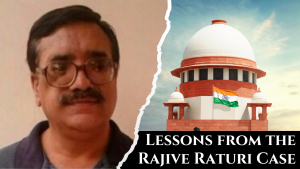Unregulated Soapstone mining is leading to land-subsidence in Uttarakhand’s Bageshwar
Context:
The Uttarakhand High Court has raised serious concerns over unregulated soapstone mining in Bageshwar district, Kumaon, where over 160 mines are operational. A 2024 report highlighted the threat to local villages in Kanda due to rampant mining, leading to land subsidence and erosion. The Court took suo motu cognizance, prompting an alarming report on the widespread consequences of these activities.
About Soapstone, Its Locations, and Soapstone Mining:
- Soapstone is a metamorphic rock primarily composed of talc, used in construction, arts, and various industries.
- India is home to significant soapstone reserves, with Rajasthan holding 57% of the nation’s reserves and Uttarakhand possessing 25% However, unregulated mining has raised concerns regarding its environmental and social impacts.
Unregulated Soapstone Mining and Its Impact:
- Unregulated mining in Kanda-Kanyal and Kanda has caused severe environmental harm, including soil erosion, water scarcity, and air pollution.
- The region’s vulnerability to land subsidence and erosion has been worsened by the absence of safety protocols like buffer zones and slope monitoring, exacerbating the destabilization of the already loose, loamy soil.
Land Subsidence in Uttarakhand: Causes of Landslides and Erosion
Land subsidence—sinking ground due to underground material movement—is a growing problem in Joshimath and Bageshwar. In Bageshwar, mining activities have destabilized slopes, causing structural damage to roads, houses, and cultural heritage sites, such as the Kalika Temple, and increasing the risk of landslides, especially during the monsoon season.
Soapstone Mining Causing Landslides: Key Indicators
Key indicators of landslides caused by soapstone mining include:
- Mines located on lower slopes, weakening the upper terrain.
- Damage to traditional Kumaoni Bakhli houses, once resilient to seismic activity.
- Cracks in the Kalika Temple due to land subsidence.
- Increased water and air pollution, further affecting local agriculture and health.
Reasons for Soapstone Mining Leading to Land Subsidence
Several factors contribute to land subsidence:
- Semi-Mechanized Mining: Heavy machinery accelerates land destabilization, particularly in areas with loose soil and steep slopes.
- Encroachment of Forest Lands: Illegal mining on Van Panchayat lands and tree felling have aggravated soil erosion.
- Nexus Between Authorities and Mining Operators: Corruption and collusion between local authorities and mine owners have led to unregulated expansion of mining, further exacerbating environmental damage.
Addressing Unregulated Soapstone Mining and Land Subsidence:
Regulation of Mining Practices
- Clear Mining Guidelines: The government should define clear guidelines for semi-mechanised mining, limiting the use of heavy machinery to prevent over-extraction and land destabilisation.
- Proper Licensing and Monitoring: A robust licensing system should be implemented, with frequent inspections to ensure compliance with environmental standards. Buffer zones, retaining walls, and slope stabilization should be mandatory to minimize soil erosion and subsidence risks.
Strengthening Environmental Safeguards
- Rehabilitation of Mining Sites: The government must introduce reclamation policies, requiring mining operators to restore mined areas by planting green belts, building retaining walls, and implementing soil erosion control.
- Soil Erosion and Water Management: Government-led initiatives should focus on water conservation and managing the environmental impacts of mining, especially related to water pollution and scarcity.
Addressing Encroachment and Forest Land Issues
- Strict Action on Encroachment: The government must act decisively against the illegal encroachment of forest and common lands for mining, ensuring compliance with environmental laws.
- Forest Conservation Policies: Stricter forest conservation and tree plantation programs should be enforced in mining-affected areas to minimise environmental degradation.
Community Awareness and Involvement
- Public Awareness Campaigns: Local communities should be educated on the long-term impacts of unregulated mining, land subsidence, and the importance of cultural preservation to foster sustainable practices.
- Involve Communities in Decision-Making: Local communities must be actively involved in the decision-making process related to mining policies, with mechanisms for reporting illegal activities or unsustainable mining practices.



